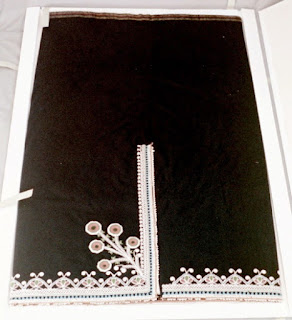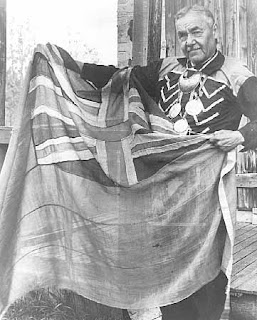How does an art conservator, conserve sound? Sound is made of waves that penetrate the air, that move and bounce, not something that one holds in their hands or sits on your work bench. Sound is motion that creates vibrations in our ears, not an inanimate object that one observes, cleans, or consolidates: all of the typical activities that an art conservator performs.
 |
| The Edison tinfoil before conservation. |
This was the dilemma that was confronted by Art Conservator, Gwen Spicer, earlier this year, when Chris Hunter, Curator and Director of Collections at miSci, (formerly the Schenectady Museum) brought the earliest known full sheet of Thomas Edison's tin-foil to the conservation lab.
Typically when treating an artifact, a conservator can visually observe the changes that are occurring as the treatment progresses, and how these changes are effecting the end product. All types of tools are used in order to enhance this ability, the use of specific light, magnifiers and microscopes. But when the end product is the auditory aspect of the artifact, these modern tools are ineffective.
Edison's phonograph serves as the marker for modern sound recording. It is the beginning of the technology to preserve sound. Ironically, Gwen Spicer with every tool and technological advance known to conservators, must use the most rudimentary of tools to painstakingly flatten the tinfoil by hand.
It is not what the foil actually looks like that will determine if the sound can be retrieved. The technology that is used to retrieve the sound will not rely on the surface being absolutely perfect, which is of benefit since the "found" condition of the tin-foil, and the way it was stored, make it impossible to completely flatten. The tin foil itself is like an archive, with its importance lying in the information that it holds, as opposed to the actual "beauty" of the sheet its self.
When treating this tin-foil, there was a two part aspect to the project. There was the flattening of the sheet and removing or lessening the folds and creases, which allowed the new technology to better be able to read the surface of the sheet. The second part was the creation of the sound that was in the bumps and dips of the surface that creates the sound. As a conservator, you must consider, how much do you touch or hold the sheet so as not to disturb its ability to create the sound? But of course, that answer is unknown. In fact, during the treatment there was no real method to know how the treatment was effecting the final outcome.
A next set of experts at California's Berkeley Lab,who would enable the world to finally know what was hidden in this sheet of tin-foil, would ultimately determine if the treatment was effective. It would only be evident, once they began their attempts to "uncover" the sound.
Tonight, at the GE Theater at Proctor's in Schenectady at 6:30pm, the world will hear the full contents of this Edison tin-foil. Right now, we know it is a bit longer than one minute, there is some music and a male voice reading "Mary Had a Little Lamb", but the rest is unknown until later this evening.
_____________________________
Gwen Spicer is a textile conservator in private practice. Spicer Art Conservation specializes in textile conservation, object conservation, and the conservation of works on paper. Gwen's innovative treatment and mounting of objects and textiles is unrivaled. To contact her, please visit her website.



































